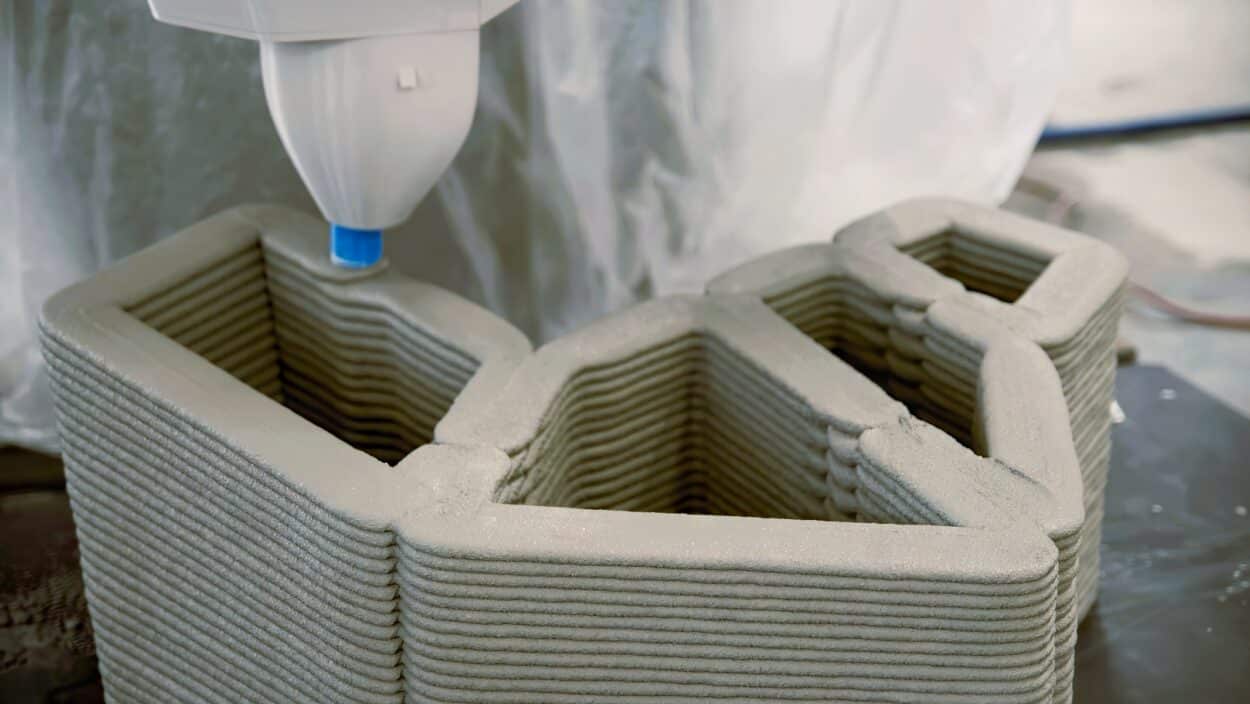Holcim unveils Phoenix, a groundbreaking 3D-printed concrete masonry bridge in Lyon, France, representing a transformative leap in sustainable construction with a 40% lower CO2 footprint and a commitment to circular design principles.
In a groundbreaking move, Holcim, the global leader in sustainable building solutions, launched “Phoenix,” a revolutionary 3D-printed concrete masonry bridge located at the Holcim Innovation Hub in Lyon, France, last December. This architectural marvel, constructed with 10 tons of recycled materials, marks a significant leap in sustainable construction.
Phoenix emerges as the evolutionary successor to the Striatus, Holcim’s pioneering 3D-printed concrete bridge showcased at the 2021 Venice Architecture Biennale. The new bridge utilizes Holcim’s ECOCycle® circular technology and introduces a proprietary concrete ink that boasts a 40% lower CO2 footprint compared to its predecessor.
Circular by design, Phoenix relies solely on compression without reinforcement. The blocks used in its construction are easily disassembled and recycled, showcasing a commitment to sustainable and circular construction practices.
The Collective Vision Behind Phoenix
The development of Phoenix is a collaborative endeavor, bringing together key partners: Block Research Group at ETH Zurich, Zaha Hadid Architects Computation and Design Group (ZHA CODE), and incremental3D. This strategic alliance is dedicated to propelling low-carbon structural solutions, marking a pivotal milestone in the continual drive to diminish the carbon footprint associated with construction projects.


Philippe Block, Co-Director of Block Research Group at ETH Zurich, underscores the historical principles shaping the project, emphasizing the goal of facilitating easy recycling and deconstruction. Shajay Bhooshan, Head of Computation and Design Group at Zaha Hadid Architects commends Phoenix as a technological milestone, highlighting advancements in integrated design-to-construction technologies.
Expressing enthusiasm, Johannes Megens, Co-Founder of incremental3D, anticipates Phoenix’s substantially reduced carbon footprint and lasting impact, setting a positive trajectory for forthcoming projects.
Holcim’s dedication to sustainability transcends the confines of Phoenix, reflecting a broader mission to globally decarbonize construction. The company’s innovative approach aligns seamlessly with its diverse range of low-carbon and circular solutions, spanning from ECOPact to ECOPlanet.
Innovating the Built Environment Through Collaboration
Phoenix serves as a testament to the potency of collaboration in steering innovation toward a low-carbon and circular built environment. Partnerships with entities such as Block Research Group at ETH Zurich and Zaha Hadid Architects have played an indispensable role in realizing this transformative project.
“I am thrilled to unveil Phoenix, a monument to sustainability and the result of a fruitful collaboration with our partners to meet a common goal: demonstrating that circular and low-carbon infrastructure is possible today. This project showcases the impact that innovation can have in Holcim’s mission to decarbonize building for a net-zero future,” Edelio Bermejo, Head of Global R&D at Holcim, proudly declares
Phoenix not only emerges triumphantly from the ashes of its predecessor, Striatus, but it also signifies a promising stride towards a more sustainable and eco-friendly future in construction.
The imperative for sustainable construction has never been more pressing amid rapid urbanization and population growth. Holcim’s commitment to building better with less, utilizing low-carbon materials, smart design, and circular construction, is exemplified through the innovative strides made with Striatus and the groundbreaking Phoenix. As we move forward, the collaborative efforts with our partners fuel the exploration of scaling up Phoenix, offering a promising avenue for more widespread, sustainable infrastructure solutions to meet the global challenges of our time.












